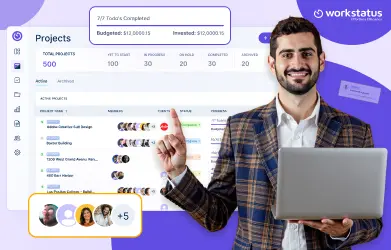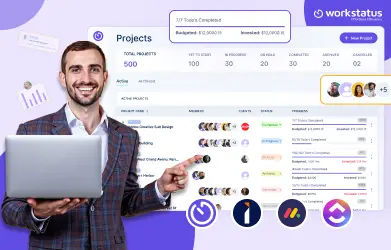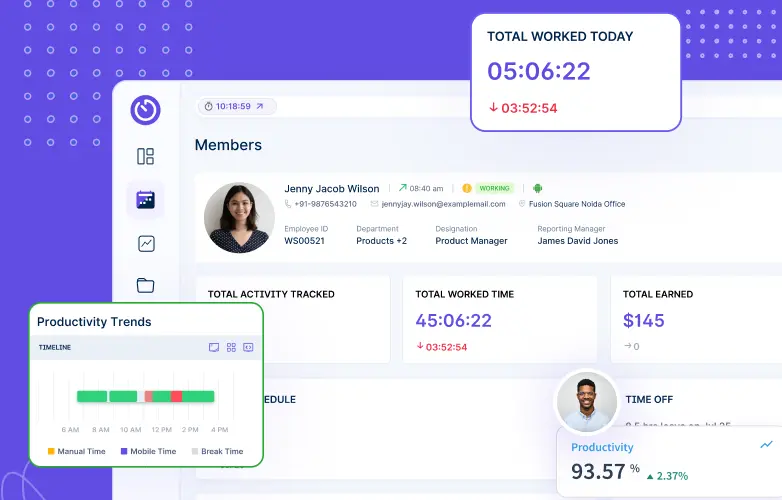Table of Contents
Introduction
Are you thinking about switching from a traditional 9-5 job to freelancing?
You’re not alone!
According to recent research, there is a 22% increase in freelancers globally over the past decade.
The reason for such a sharp surge is that more individuals are considering the flexibility and autonomy that freelancing offers.
But how do you make a successful transition?
In this blog post, we’ll explore the key steps and considerations to help you navigate the exciting journey from the structured 9-5 grind to the dynamic freelancing.
Let’s dive in.
How to Begin with Freelancing Work?
To start freelancing, you’ll need to take into account the following steps:
1. Define your Business Goals
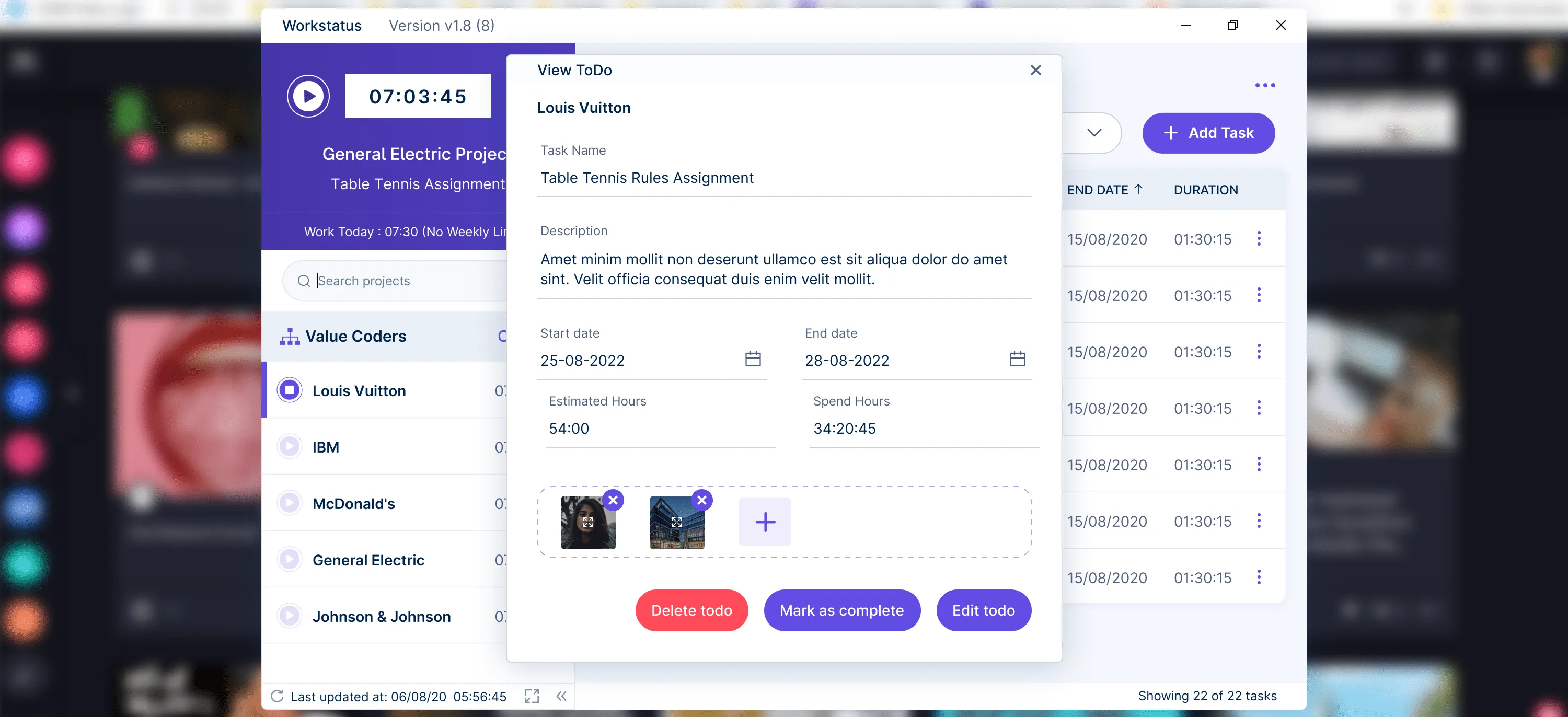
To kickstart your freelancing journey, it’s essential to define your business goals. This means being honest with yourself and addressing a crucial question:
Are you freelancing as a part-time venture, or do you envision transforming it into a full-fledged business?
Your response will shape your subsequent actions, as you’ll either seek to balance your full-time job and freelancing or gradually transition to a full-time freelance career.
Your answer reflects your long-term objective.
To pursue it, you’ll need to establish various short-term goals and address queries such as:
- What services will you provide?
- What specific niche will you specialize in?
- What monthly income target will prompt you to leave your full-time job (if applicable)?
These pivotal questions and short-term goals are fundamental in laying the groundwork for your freelancing career.
2. Identify your Niche
Discovering a specific niche and adhering to it is crucial for freelancers, regardless of whether you specialize in graphic design, copywriting, web development, or any other field.
For instance, if you’re a content writer, you should refrain from covering every topic, from gardening tips to complex tax regulations.
While you might initially explore diverse subjects to identify your ideal niche, eventually, you should select one and commit to it.
For instance, being recognized as a Cryptocurrency or Technology content writer carries more weight than being perceived as a General content writer.
Clients often seek specialists rather than generalists, fostering confidence in your expertise and attracting more specific project opportunities.
The same principle applies to graphic designers:
- Consider your expertise level
- Evaluate your existing network of contacts
- Reflect on your inclination toward a particular design specialization
Then, make a definitive choice by focusing on crafting interfaces for apps, designing unique logos, curating book layouts, or engaging in any other specialized design work.
This approach doesn’t imply that you should categorically refuse to work on other projects. However, it allows you to build your experience, skills, and reputation within a specific domain, enhancing your prospects of securing freelance opportunities from esteemed companies seeking experts in a particular field.
3. Identify your Potential Clients
Pinpointing your target clients is as crucial as identifying your niche; casting a wide net won’t yield the best results.
While small businesses, remote teams, and other freelancers might all require your services, it’s wise to focus on one or two specific client types.
For instance, if you’re starting a podcast about remote work, consider targeting freelancers, remote teams, or fully remote businesses as your primary audience.
However, specificity remains paramount.
Identify your target readers by considering the following:
- The age group you wish to engage, such as Millennials or Gen Z.
- The income level, catering to those with a limited budget or higher spending capacity.
- The geographical location, like the US market or other specific regions.
- The gender you aim to primarily address, whether male, female, or non-binary readers.
- The educational background, catering to beginners or experienced professionals.
Asking yourself these questions provides valuable insights.
For instance, you could tailor your content for female Millennials in the US who are just starting their remote careers and seeking to travel on a budget.
This level of specificity can attract the right audience without alienating other remote workers.
Your content can still revolve around the general challenges, tips, and hacks of remote work, appealing to a broad readership.
However, it allows you to refine your marketing strategies and create targeted copy for your landing page and subsequent pages.
4. Set your Freelance Rates
Establishing your freelance rates might initially seem daunting, but it becomes simpler when you consider the key factors that influence your ideal and practical pricing:
- Your level of experience, if any
- Your educational background
- The demand for your services and the supply of similar freelancers in your field
- The prevailing price points within your industry
- The average hourly rates for freelancers in your specific niche
- The impact of your location on your rates
Determining your hourly rates involves utilizing this information. Higher education, substantial experience, and a high demand for your specialized skills can justify setting higher prices.
If you’re based in a location like the US, you may have the opportunity to command higher rates than in a place like the Philippines.
However, it’s essential to factor in your living expenses and ensure that your rates cover your costs and yield a profit.
While it’s crucial not to overprice your services relative to these parameters, pricing yourself too low can also be detrimental.
Setting your rates too low initially can make it challenging to raise your prices later on, even if you find it necessary to do so.
Finding the right balance is key to establishing fair and competitive pricing for your freelance services.
5. Create a Website
Establishing an online presence becomes essential once you’ve outlined your business goals, pinpointed your niche, identified your target clients, and determined your pricing.
Crafting a website with a portfolio showcasing your previous work, skills, and expertise is an effective way to accomplish this.
While creating a website for free using a platform like Wix or Shopify is acceptable, investing in a domain name from a hosting website can significantly enhance your professional image
A unique domain name and a customized email address lend credibility to your online persona, making you appear more trustworthy to potential clients.
Irrespective of your industry, opting for a domain name based on your name, especially when highlighting your portfolio, can make you more distinguishable.
Additionally, it allows for an easier transition to a different industry or niche should you decide to explore other professional avenues later on.
After selecting a hosting service and domain name, incorporate WordPress into your website and choose an appropriate theme.
Develop a landing page detailing your services and pricing, and consider adding a dedicated blog page for industry-related insights and discussions.
Ensure your website is search engine optimized by integrating common industry-specific keywords into your content.
This optimization aids in improving your visibility on search engines, making it easier for potential clients to discover your website.
Most importantly, create a dedicated portfolio page tailored to your specific industry.
Depending on your line of work, this portfolio page could encompass various forms, such as:
- A compilation of your best articles for writers.
- A video reel for video producers and animators.
- A curated selection of photographs for photographers.
Finding The First Client For You
Your first customer might find you through your website portfolio, but it’s essential to consider what employers want from freelancers.
You can do this in various ways:
1. Become a Member of your Industry’s Community
Engage with your industry’s community by joining a forum dedicated to your field. Offer your thoughts on important matters and respond to queries and discussions.
For example, you can explore forums like Reddit that cater to your specific industry. Don’t hesitate to ask questions yourself.  If you come across any mural, application, logo design, or any other industry, contact the client who commissioned it. Inquire about their requirements for the freelancer they hired and the reasons behind their selection.
If you come across any mural, application, logo design, or any other industry, contact the client who commissioned it. Inquire about their requirements for the freelancer they hired and the reasons behind their selection.
Clients can provide valuable insights into what they seek from the professionals they collaborate with.
2. Pitching Through Emails
Mastering the art of pitching your expertise and skills through email is just as crucial as possessing those skills.
Cold emailing potential clients serves as an effective starting point. Identify potential clients in your industry, source reliable databases, and begin composing your emails:
- Personalize your emails: Address the recipient directly, avoiding generic salutations like “To Whom It May Concern.”
- Ensure your pitch reaches the right person: For instance, if you aim to secure a writing opportunity with an online magazine, direct your pitch to the magazine’s editor rather than an unrelated department.
- Create a well-researched proposal: Familiarize yourself with the company or website you’re targeting and grasp how your services align with their requirements.
Email pitching may require some practice, but the effectiveness of your approach will become evident soon enough. If you don’t receive any responses, adjustments to your strategy are likely necessary.
Acquiring your first client can be the most challenging, particularly if you’re still establishing yourself in your industry or niche.
However, a satisfied first client can provide a referral, bolstering your credibility and reputation among future clients.
3. Try Freelance Job Platforms/Websites
You can explore freelance job websites that cater to a variety of professions, including designers, developers, translators, writers, virtual assistants, and more.
You can begin with:
- Upwork
- Freelancer
- Fiverr
- Toptal
- Guru
- PeoplePerHour
- SimplyHired
- FlexJobs
- 99designs
- Textbroker
After that, continue working in that direction.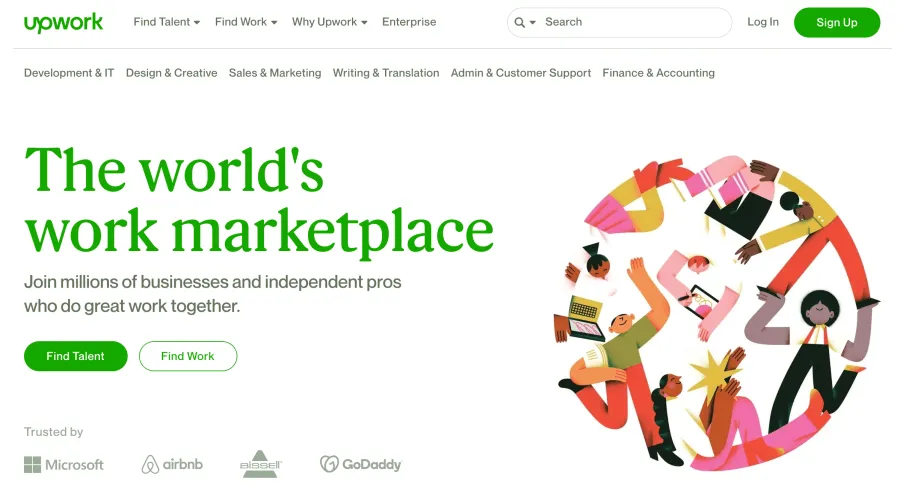
4. Expand your Network
Expanding your network as a freelancer means connecting with more people who do similar work as you.
It can help you find new opportunities, get advice, and learn from others’ experiences.
You can do this by joining online groups, attending events, or contacting other freelancers through social media or professional platforms.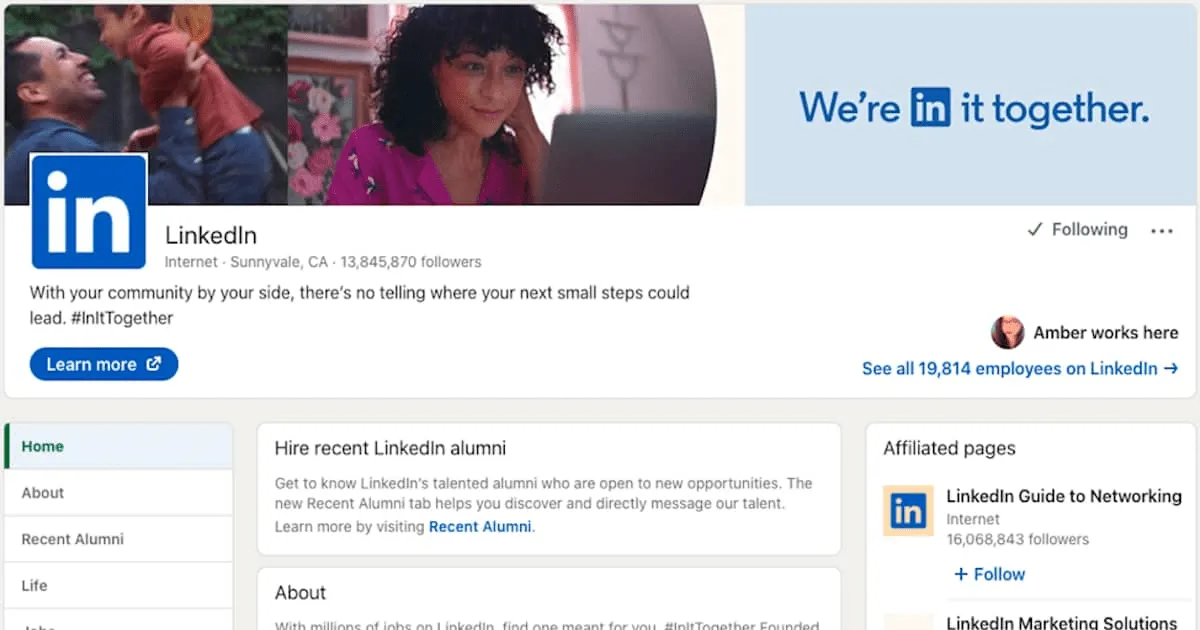
Manage your Clients With Workstatus
Handling your clients becomes easier with Workstatus.
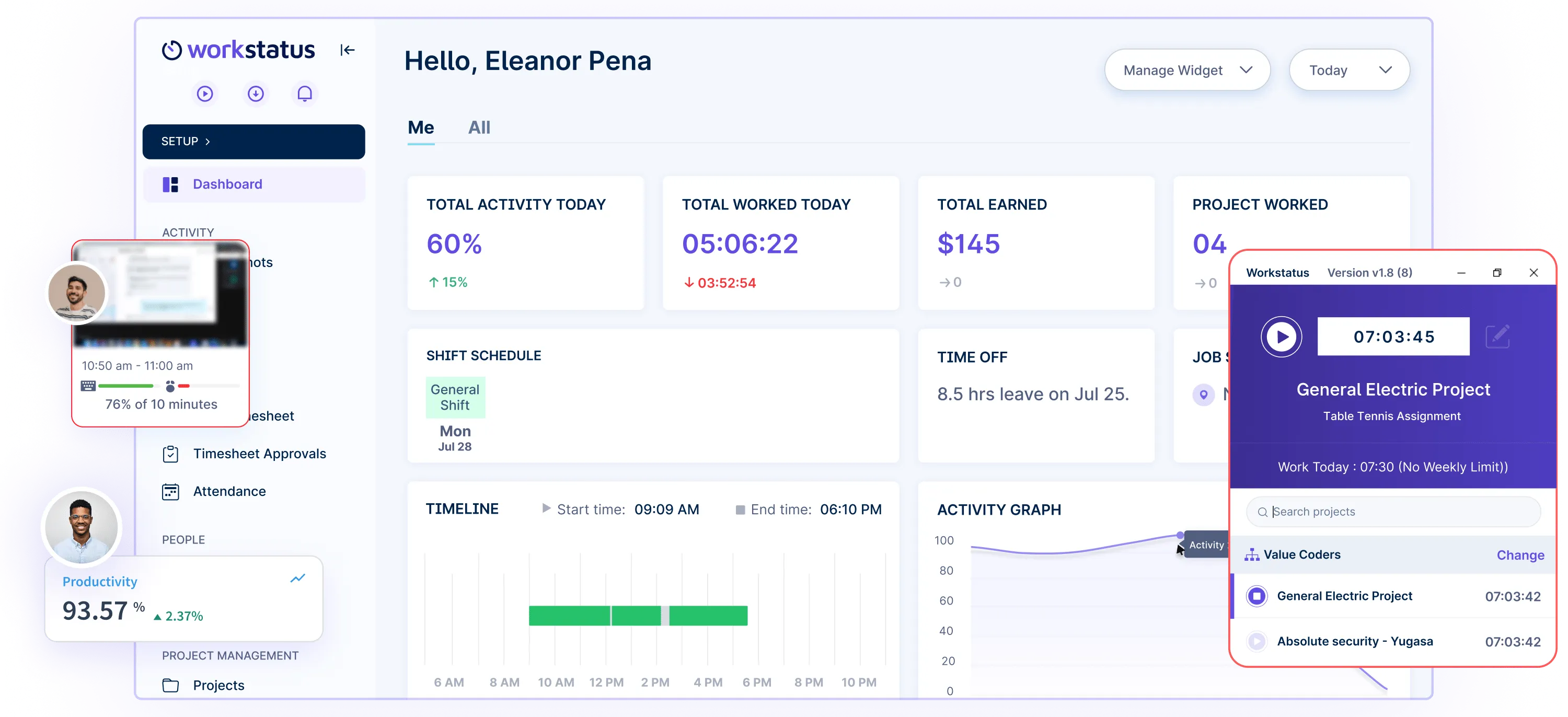
It’s a tool that helps you keep track of your client interactions, deadlines, and project progress.
You can use it to organize your tasks, set reminders, and maintain a clear communication channel, ensuring a smoother and more efficient client management process.
Here is the list of its most advanced features to help freelancers with client management:
1. Track Billable Hours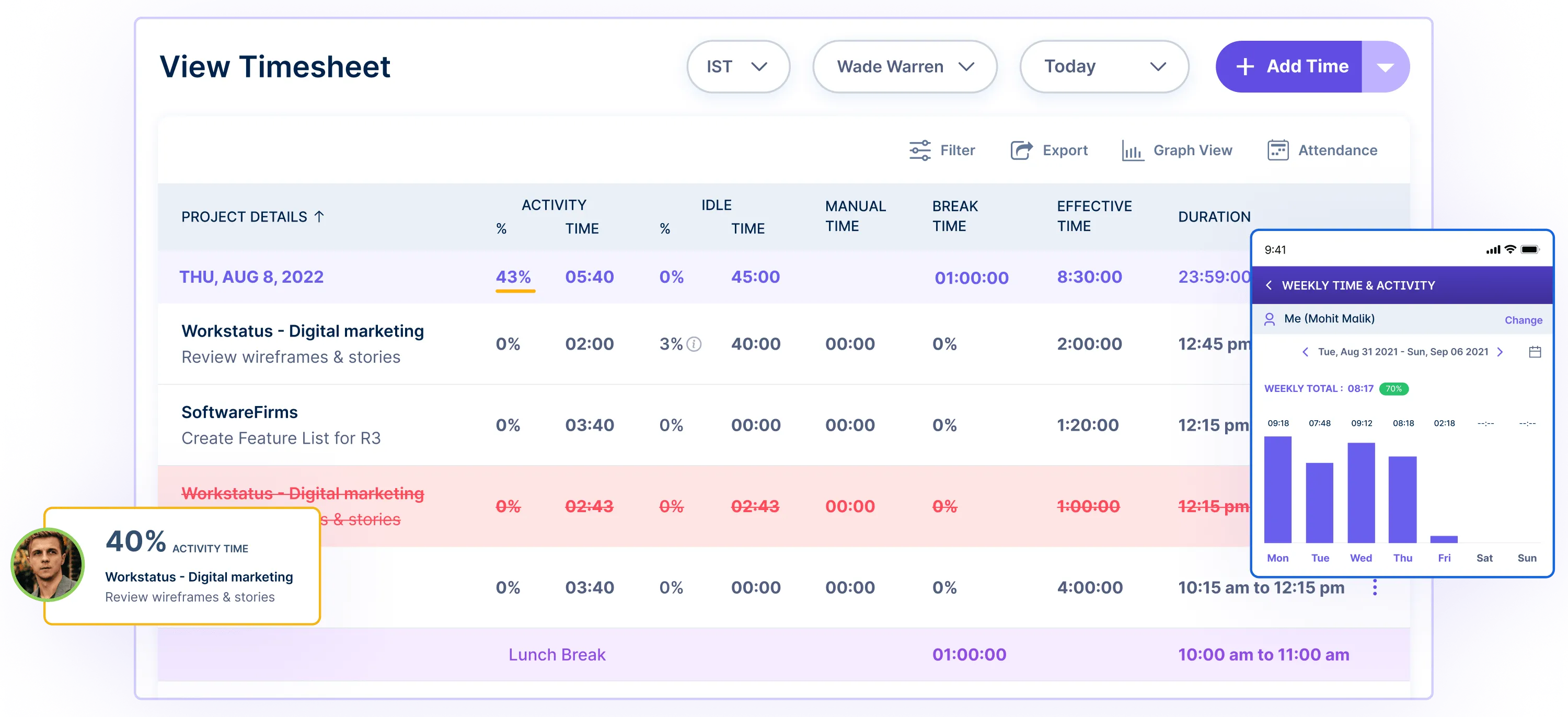
Billable hours tracking allows freelancers to keep an accurate record of the time spent on various client projects.
Key Benefits:
- Time Accuracy
- Transparent Billing
- Client Trust
By maintaining a detailed log of billable hours, freelancers can ensure precise invoicing and transparent communication with clients.
2. Overtime Calculator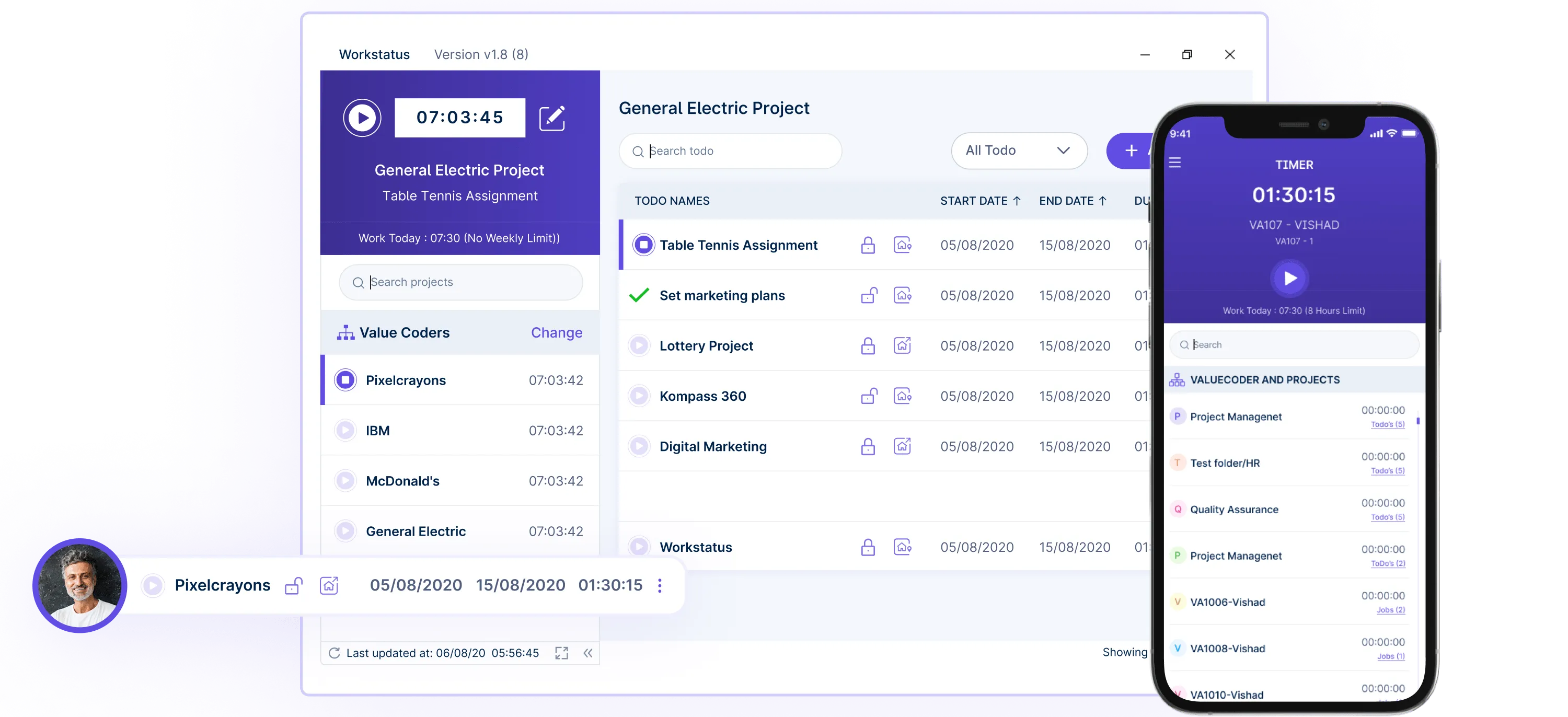
The overtime calculator feature helps freelancers determine and calculate any additional hours worked beyond the regular schedule.
Key Benefits:
- Fair Compensation
- Efficient Payments
- Avoid Disputes
By accurately assessing overtime, freelancers can ensure fair compensation for their extended efforts on client projects.
3. Invoice Management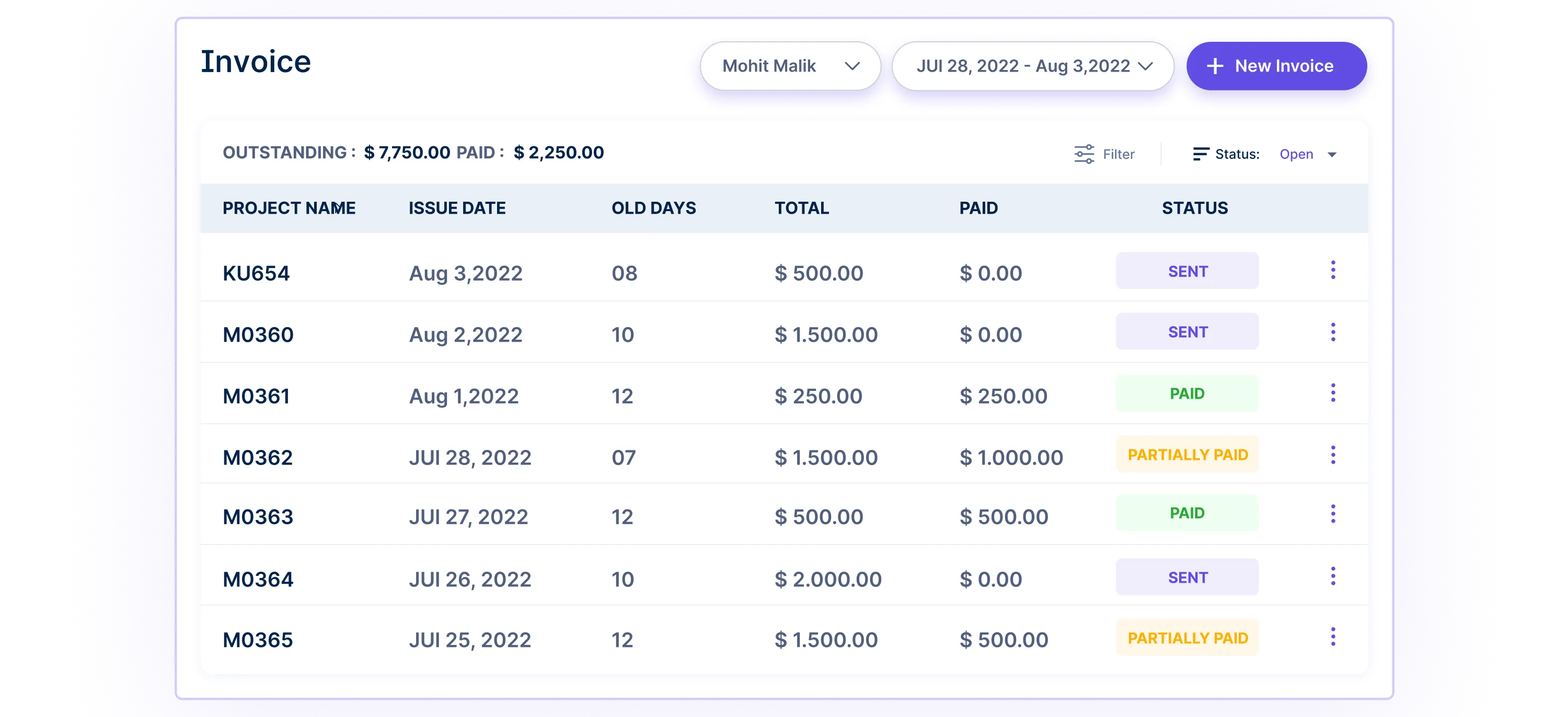
The invoice management feature aids freelancers in efficiently organizing and managing their invoices.
Key Benefits:
- Financial Organization
- Streamlined Payments
- Enhanced Professionalism
By maintaining a well-organized record of all financial transactions, freelancers can ensure seamless financial operations and enhance their overall professionalism.
4. Budgeting & Reporting
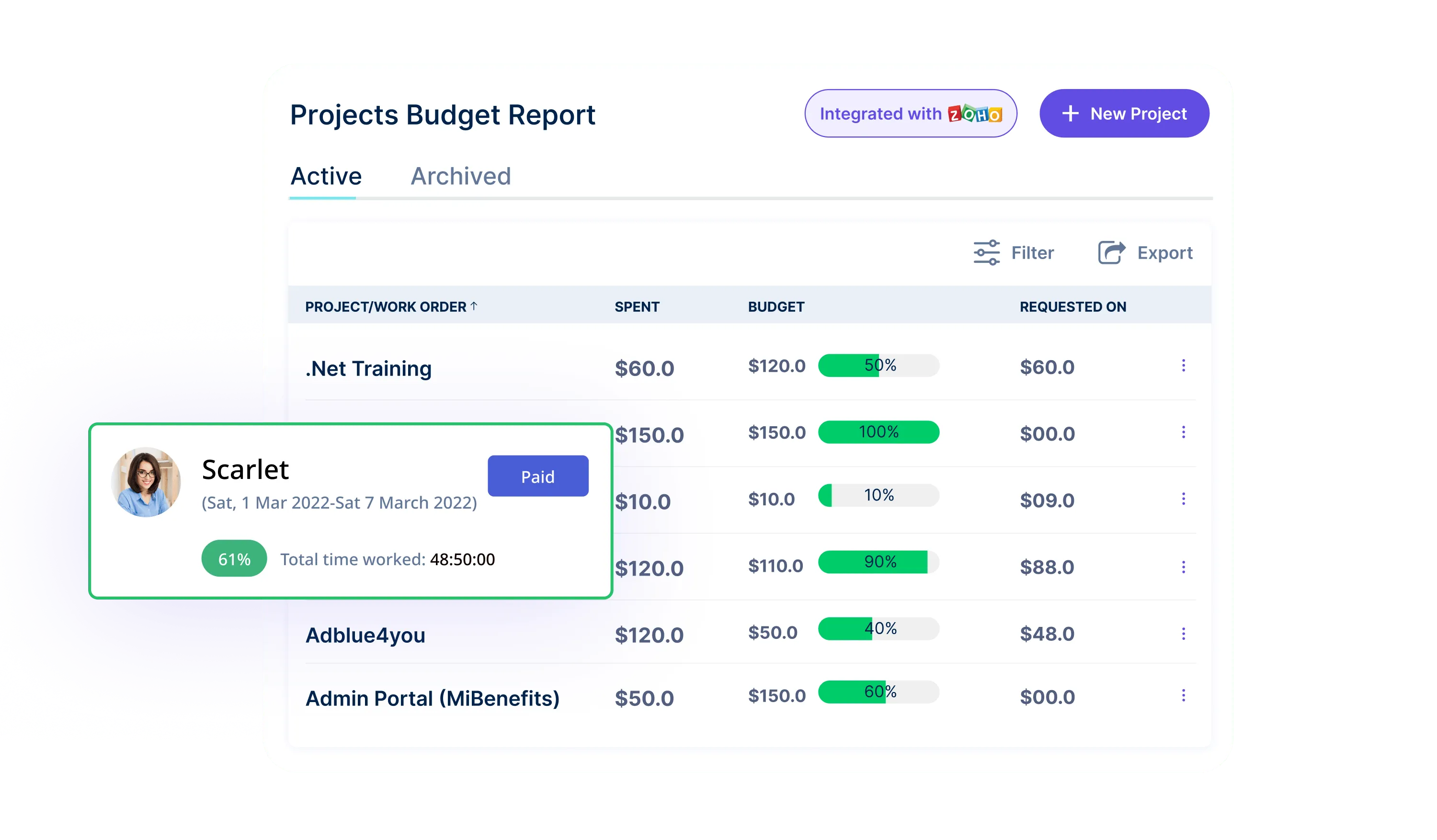 The budgeting & reporting will help freelancers set and manage their budgets, as well as generate comprehensive reports to track their financial performance.
The budgeting & reporting will help freelancers set and manage their budgets, as well as generate comprehensive reports to track their financial performance.
Key Benefits:
- Financial Stability
- No Over-expenditure
- Accurate Financial Analysis
By implementing effective budgeting and reporting practices, freelancers can ensure financial stability and make informed business decisions.
5. Project Management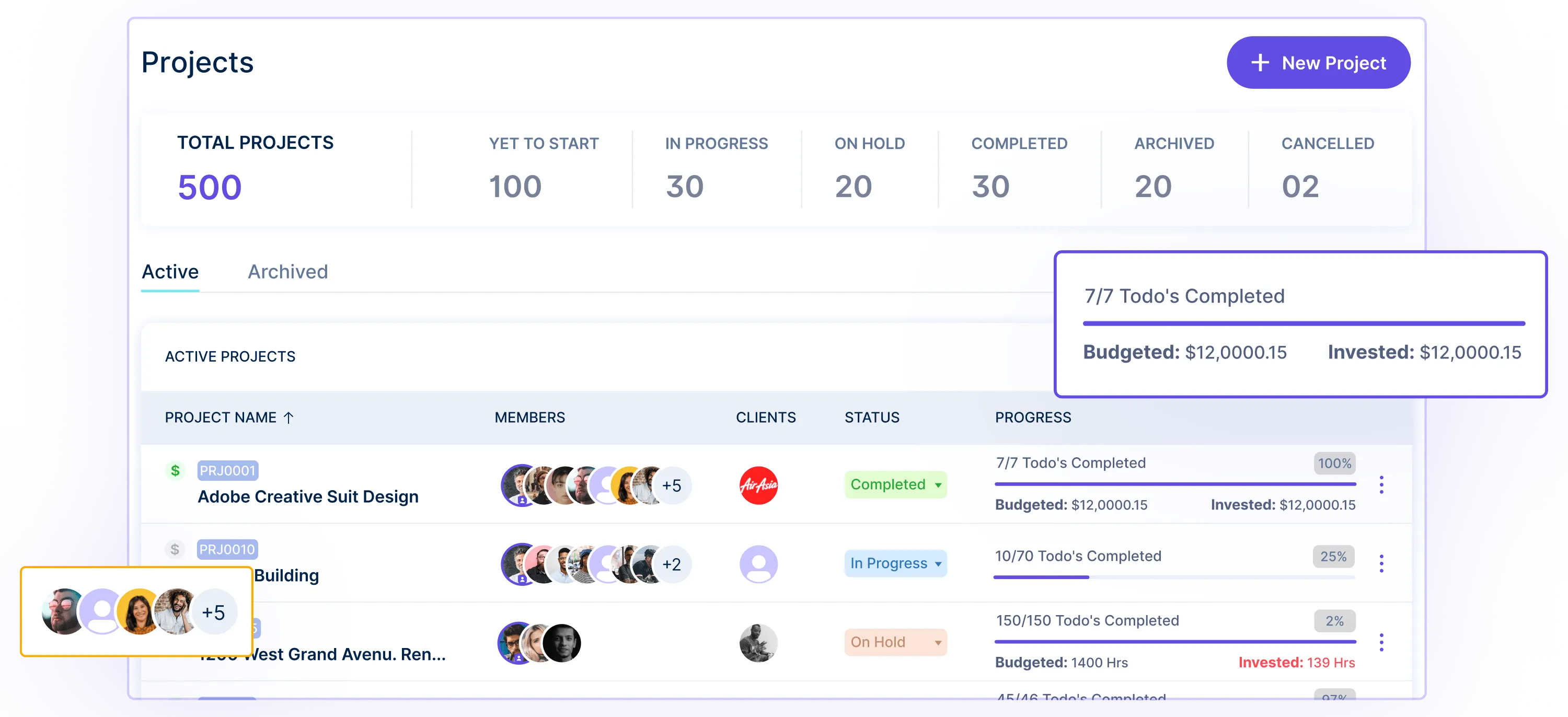
The project management feature enables freelancers to organize and prioritize their tasks effectively, ensuring that client requirements and deadlines are met efficiently.
Key Benefits:
- Meeting Targets
- On-Time Deliveries
- Integrate with Zoho, Trello, etc.
By implementing robust project management practices, freelancers can enhance their productivity and deliver high-quality outputs within stipulated timelines.
Know Pricing Plans
Workstatus offers various pricing options suitable for freelancers. Here’s a table that shows what each plan includes and how much it costs.
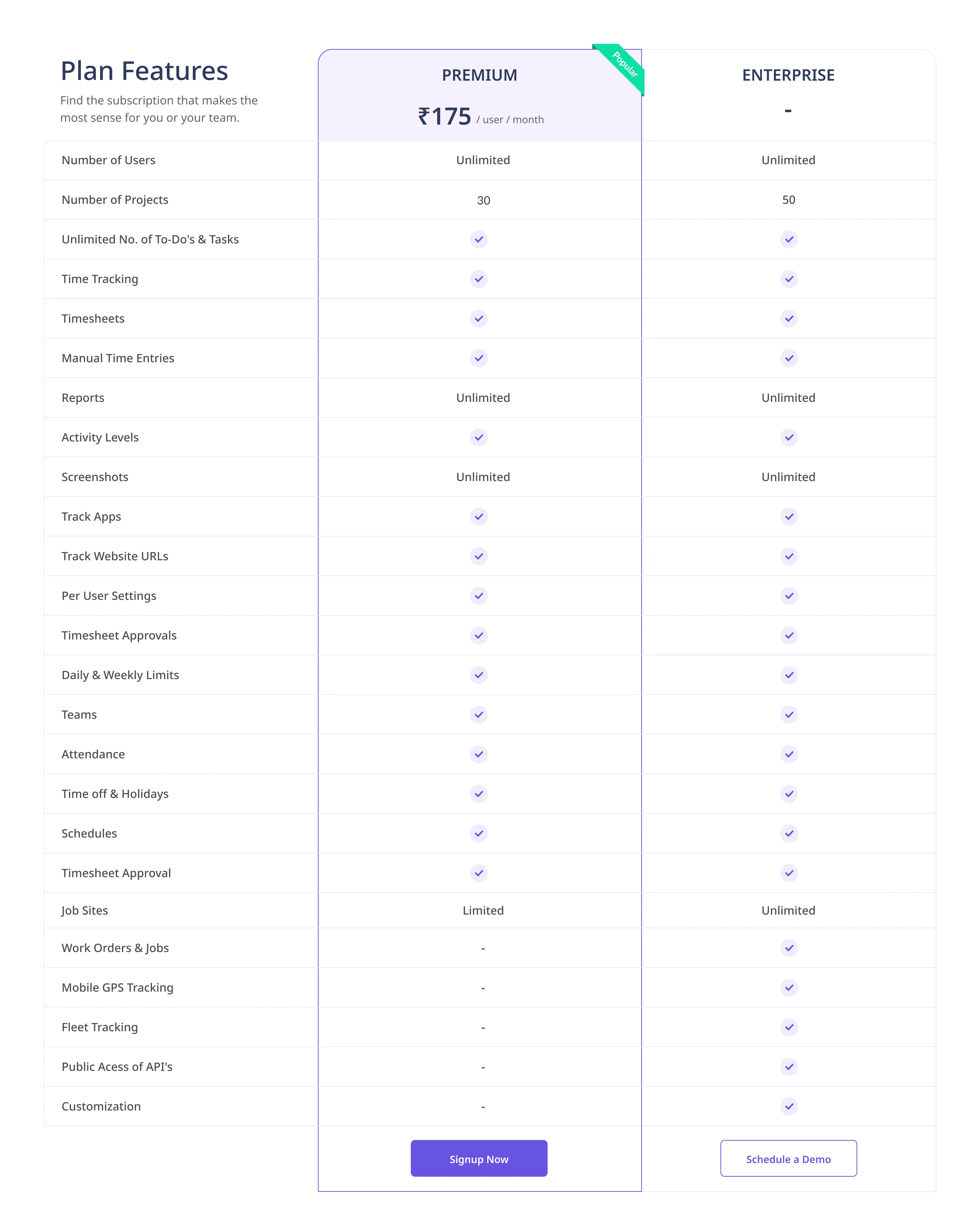 How To Balance Your 9-5 Job with Freelancing
How To Balance Your 9-5 Job with Freelancing
Balancing a full-time job with freelancing requires careful time management and strategic planning to ensure that both commitments are met effectively.
Here’s a simple guide to help you achieve a harmonious balance between your employment and freelance endeavors:
1. Establish a Realistic Schedule
- Allocate specific time slots for your freelance work that don’t clash with your full-time job
- Create a structured routine that allows you to dedicate focused periods to both professional commitments
2. Prioritize Tasks
- Identify the most critical tasks for both your job and freelance projects
- Focus on completing high-priority tasks first to avoid feeling overwhelmed by a heavy workload
3. Communicate Clearly
- Maintain open communication with your employer and freelance clients about your availability and any potential schedule conflicts
- Set realistic expectations with clients regarding project timelines and deliverables to manage their expectations effectively
4. Set Boundaries
- Establish clear boundaries between your full-time job and freelance work to prevent burnout and maintain a healthy work-life balance
- Avoid overcommitting yourself and learn to say no when necessary to prevent excessive stress and exhaustion
Balancing these two professional commitments may be challenging.
Still, with effective time management, clear communication, and realistic goal-setting, you can achieve a successful equilibrium between your full-time job and freelancing pursuits.
Scaling your Freelance Business
Scaling your freelance business means growing and expanding it to take on more work and make more money.
When scaling your freelance business, you’re finding ways to handle more clients and projects without overwhelming yourself.
It involves finding ways to increase your workload and income without sacrificing the quality of your work or burning yourself out.
This might include hiring other freelancers to help with tasks, focusing on higher-paying clients, or expanding your services to reach a broader audience.
Scaling your freelance business is about smart growth that allows you to earn more while maintaining a healthy work-life balance.
Closing Thoughts
Venturing into the freelancing world might initially seem complex, but it’s simpler when you follow the right steps.
To kickstart your journey in a specific field, it’s essential to concentrate on honing and expanding your core skills. For instance:
- Develop an impressive portfolio for a design career
- Enhance your writing proficiency for a writing role
- Practice coding intensively for a programming career
However, certain steps are universal for all freelancers, irrespective of their industry:
Begin by defining your business objectives and identifying a specific niche within your industry. Then, pinpoint your target clients and establish appropriate pricing for your freelance services.
Additionally, create an engaging website that showcases your top-notch work.
While finding your first client might be the most demanding phase, establishing a rapport with the first one can pave the way for more as you expand your network and accumulate referrals.
You can use tools like Workstatus to manage your clients. With its efficient toolkit for tracking billable hours, organizing invoices, and streamlining task management, Workstatus empowers you to maintain a professional edge and foster stronger client relationships effortlessly.
Ultimately, it’s vital to set boundaries and establish fundamental guidelines that facilitate a balance between your full-time job and your freelance ventures.



